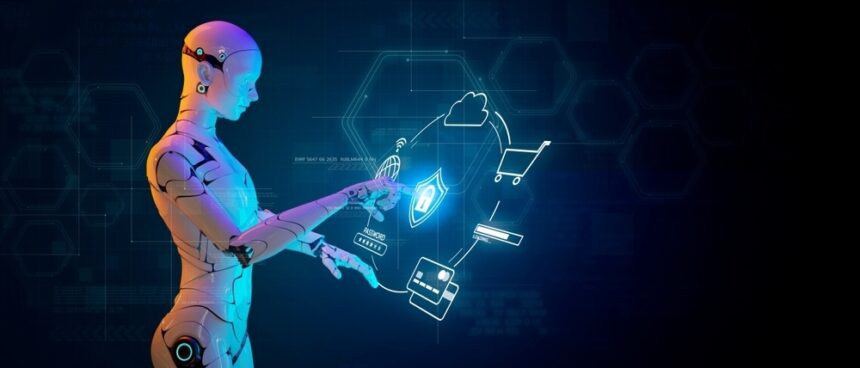AI technology is driving some tremendous changes in digital technology. Many of the developments brought on by AI have been beneficial.
However, some of the changes created by AI have been harmful. One of the biggest examples of problems caused by AI is the growing threat of cybersecurity threats. A growing number of hackers are finding innovative ways to weaponize AI technology to commit cybercrime.
As these threats worsen, organizations and the cybersecurity experts they depend on will need to be aware of the threats AI poses in the hands of hackers and find ways to use AI to fortify their own defenses in turn.
What Are the Biggest Ways Hackers Use AI to Exploit their Targets
As a business owner with a strong online presence, you definitely want to do everything you can to ensure that your website stays as safe and secure as possible. The last thing you want is to be hacked by cybercriminals and have your company’s and customers’ data fall into the wrong hands. In order to prevent this from happening, it is important to be aware of any current digital security threats.
Sadly, AI technology is only making cybersecurity threats worse than ever. Bob Violino wrote an article in CNBC that said both cybersecurity experts and black hat hackers are using AI technology. However, cybercriminals seem to be benefiting the most from AI, which means that cybersecurity experts need to be more diligent and innovative to use it effectively.
With this in mind, let’s start by looking at three of the top current digital threats that are becoming worse due to AI technology, as well as how to prevent them from happening to your company:
1. Ransomware
Ransomware is one of the top cyberthreats that is currently threatening small and medium sized businesses, according to Forbes. As its name implies, hackers will get access to your network and then demand that you pay ransom in order to get your data back. Since most ransomware attacks begin with malware infecting computers, often through phishing emails, it is important to educate your employees about how to recognize and delete these messages. In addition, backing up your data on a regular basis can also be helpful; this way, if a breach does take place, you can quickly restore your data with very little downtime.
In May, Kyle Alspach wrote an article about the terrifying threats that AI-powered ransomware attacks pose. Mikko Hyppönen, a renowned expert on cybersecurity topics, wrote that these ransomware attacks will become even more horrendous as hackers become more proficient at using AI to automate many of their strategies.
2. Inferior “Cyber Hygiene”
Another reason cybercriminals are gaining access to websites is because the companies and their employees are practicing what is referred to as poor cyber hygiene. This term relates to the way you and your team use your company’s technology, and how careful—or careless—people are about safeguarding sensitive data. Examples of inferior cyber hygiene include not using two-factor authentication to access company accounts, jotting down passwords on sticky notes, using unprotected Wi-Fi networks, and misplacing personal devices which have been used for work.
This is also going to be a greater threat as more hackers use AI to identify weak targets. Hackers usually try to target targets with the weakest security, so they will use AI to automate their process of finding potential victims.
To help improve cyber hygiene, start by requiring two-factor authentication, use a password manager program, and ask that employees not use personal devices for work. Also, to help ensure that hackers will not be able to gain access to usable information, it is important to make sure that your company SSL certificates are current. Basically, when you buy an SSL certificate, it will make sure that data that is sent between a customer and your website is impossible for hackers to read. To make the process of monitoring security certificates as easy as possible, you may want to invest in an SSL certificate manager program through a company such as Sectigo. It offers other innovative digital security solutions in addition to SSL certificate authority, including PKI management, private PKI, and private CA services.
3. Credential Stuffing
Credential stuffing refers to when a cybercriminal uses stolen credentials from one company to access another. The hackers usually get this data from a breach or sometimes by purchasing it from the dark web.
They can use AI to make these attacks even worse. Machine learning tools help them find connections between various organizations, so they can use credential stuffing more effectively.
Unfortunately, this type of attack is becoming more common and it is harder to trace, mainly because the crooks have paid for a list of valid usernames and passwords, which they are then using to access other sites. Fortunately, credential stuffing can be prevented by making sure that your employees do not use the same password for different websites. Requiring multi-factor authentication can also help prevent credential stuffing from being successful.
Being Proactive Can Help Prevent Digital Threats as Hackers Become More Brazen with the Use of AI
Cybercriminals are always looking for new ways to access sensitive data. AI technology is making these criminals even more frightening. The good news is that cybersecurity professionals can take more precautions to fortify their defenses as AI becomes a greater threat than ever. Smart cybersecurity experts will find ways to use AI to fight hackers as well.
Being aware of their latest tactics, and then taking a proactive approach, may allow you to prevent a security breach from affecting your company’s website. By teaching your team to avoid phishing scams, enacting two-factor authentication, using an SSL certificate and PKI manager program, and practicing superb cyber hygiene, your will go a long way in boosting your digital security.

